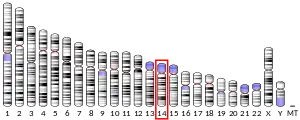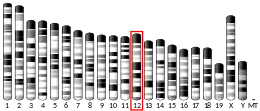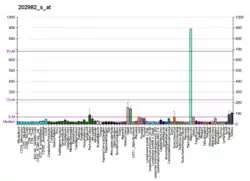| ACOT2 | |||||||||||||||||||||||||||||||||||||||||||||||||||
|---|---|---|---|---|---|---|---|---|---|---|---|---|---|---|---|---|---|---|---|---|---|---|---|---|---|---|---|---|---|---|---|---|---|---|---|---|---|---|---|---|---|---|---|---|---|---|---|---|---|---|---|
| |||||||||||||||||||||||||||||||||||||||||||||||||||
| Identifiers | |||||||||||||||||||||||||||||||||||||||||||||||||||
| Aliases | ACOT2, CTE-IA, CTE1A, MTE1, PTE2, PTE2A, ZAP128, acyl-CoA thioesterase 2 | ||||||||||||||||||||||||||||||||||||||||||||||||||
| External IDs | OMIM: 609972 MGI: 2159605 HomoloGene: 25661 GeneCards: ACOT2 | ||||||||||||||||||||||||||||||||||||||||||||||||||
| |||||||||||||||||||||||||||||||||||||||||||||||||||
| |||||||||||||||||||||||||||||||||||||||||||||||||||
| |||||||||||||||||||||||||||||||||||||||||||||||||||
| |||||||||||||||||||||||||||||||||||||||||||||||||||
| |||||||||||||||||||||||||||||||||||||||||||||||||||
| Wikidata | |||||||||||||||||||||||||||||||||||||||||||||||||||
| |||||||||||||||||||||||||||||||||||||||||||||||||||
Acyl-CoA thioesterase 2, also known as ACOT2, is an enzyme which in humans is encoded by the ACOT2 gene.[5][6][7]
Acyl-CoA thioesterases, such as ACOT2, are a group of enzymes that hydrolyze Coenzyme A (CoA) esters, such as acyl-CoAs, bile CoAs, and CoA esters of prostaglandins, to the corresponding free acid and CoA.[8] ACOT2 shows high acyl-CoA thioesterase activity on medium- and long-chain acyl-CoAs, with an optimal pH of 8.5. It is most active on myristoyl-CoA but also shows high activity on palmitoyl-CoA, stearoyl-CoA, and arachidoyl-CoA.[6]
Function
The protein encoded by the ACOT2 gene is part of a family of Acyl-CoA thioesterases, which catalyze the hydrolysis of various Coenzyme A esters of various molecules to the free acid plus CoA. These enzymes have also been referred to in the literature as acyl-CoA hydrolases, acyl-CoA thioester hydrolases, and palmitoyl-CoA hydrolases. The reaction carried out by these enzymes is as follows:
CoA ester + H2O → free acid + coenzyme A
These enzymes use the same substrates as long-chain acyl-CoA synthetases, but have a unique purpose in that they generate the free acid and CoA, as opposed to long-chain acyl-CoA synthetases, which ligate fatty acids to CoA, to produce the CoA ester.[9] The role of the ACOT- family of enzymes is not well understood; however, it has been suggested that they play a crucial role in regulating the intracellular levels of CoA esters, Coenzyme A, and free fatty acids. Recent studies have shown that Acyl-CoA esters have many more functions than simply an energy source. These functions include allosteric regulation of enzymes such as acetyl-CoA carboxylase,[10] hexokinase IV,[11] and the citrate condensing enzyme. Long-chain acyl-CoAs also regulate opening of ATP-sensitive potassium channels and activation of Calcium ATPases, thereby regulating insulin secretion.[12] A number of other cellular events are also mediated via acyl-CoAs, for example signal transduction through protein kinase C, inhibition of retinoic acid-induced apoptosis, and involvement in budding and fusion of the endomembrane system.[13][14][15] Acyl-CoAs also mediate protein targeting to various membranes and regulation of G Protein α subunits, because they are substrates for protein acylation.[16] In the mitochondria, acyl-CoA esters are involved in the acylation of mitochondrial NAD+ dependent dehydrogenases; because these enzymes are responsible for amino acid catabolism, this acylation renders the whole process inactive. This mechanism may provide metabolic crosstalk and act to regulate the NADH/NAD+ ratio in order to maintain optimal mitochondrial beta oxidation of fatty acids.[17] The role of CoA esters in lipid metabolism and numerous other intracellular processes are well defined, and thus it is hypothesized that ACOT- enzymes play a role in modulating the processes these metabolites are involved in.[18]
References
- 1 2 3 GRCh38: Ensembl release 89: ENSG00000119673 - Ensembl, May 2017
- 1 2 3 GRCm38: Ensembl release 89: ENSMUSG00000021226 - Ensembl, May 2017
- ↑ "Human PubMed Reference:". National Center for Biotechnology Information, U.S. National Library of Medicine.
- ↑ "Mouse PubMed Reference:". National Center for Biotechnology Information, U.S. National Library of Medicine.
- ↑ "Entrez Gene: ACOT2 acyl-CoA thioesterase 2".
- 1 2 Jones JM, Gould SJ (Aug 2000). "Identification of PTE2, a human peroxisomal long-chain acyl-CoA thioesterase". Biochemical and Biophysical Research Communications. 275 (1): 233–40. doi:10.1006/bbrc.2000.3285. PMID 10944470.
- ↑ Hunt MC, Rautanen A, Westin MA, Svensson LT, Alexson SE (Sep 2006). "Analysis of the mouse and human acyl-CoA thioesterase (ACOT) gene clusters shows that convergent, functional evolution results in a reduced number of human peroxisomal ACOTs". FASEB Journal. 20 (11): 1855–64. doi:10.1096/fj.06-6042com. PMID 16940157. S2CID 501610.
- ↑ Hunt MC, Yamada J, Maltais LJ, Wright MW, Podesta EJ, Alexson SE (Sep 2005). "A revised nomenclature for mammalian acyl-CoA thioesterases/hydrolases". Journal of Lipid Research. 46 (9): 2029–32. doi:10.1194/jlr.E500003-JLR200. PMID 16103133.
- ↑ Mashek, DG; Bornfeldt, KE; Coleman, RA; Berger, J; Bernlohr, DA; Black, P; DiRusso, CC; Farber, SA; Guo, W; Hashimoto, N; Khodiyar, V; Kuypers, FA; Maltais, LJ; Nebert, DW; Renieri, A; Schaffer, JE; Stahl, A; Watkins, PA; Vasiliou, V; Yamamoto, TT (October 2004). "Revised nomenclature for the mammalian long-chain acyl-CoA synthetase gene family". Journal of Lipid Research. 45 (10): 1958–61. doi:10.1194/jlr.e400002-jlr200. PMID 15292367.
- ↑ Ogiwara, H; Tanabe, T; Nikawa, J; Numa, S (15 August 1978). "Inhibition of rat-liver acetyl-coenzyme-A carboxylase by palmitoyl-coenzyme A. Formation of equimolar enzyme-inhibitor complex". European Journal of Biochemistry. 89 (1): 33–41. doi:10.1111/j.1432-1033.1978.tb20893.x. PMID 29756.
- ↑ Srere, PA (2 December 1965). "Palmityl-coenzyme A inhibition of the citrate-condensing enzyme". Biochimica et Biophysica Acta (BBA) - Lipids and Lipid Metabolism. 106 (3): 445–55. doi:10.1016/0005-2760(65)90061-5. PMID 5881327.
- ↑ Gribble, FM; Proks, P; Corkey, BE; Ashcroft, FM (9 October 1998). "Mechanism of cloned ATP-sensitive potassium channel activation by oleoyl-CoA". The Journal of Biological Chemistry. 273 (41): 26383–7. doi:10.1074/jbc.273.41.26383. PMID 9756869.
- ↑ Nishizuka, Y (April 1995). "Protein kinase C and lipid signaling for sustained cellular responses". FASEB Journal. 9 (7): 484–96. doi:10.1096/fasebj.9.7.7737456. PMID 7737456. S2CID 31065063.
- ↑ Glick, BS; Rothman, JE (1987). "Possible role for fatty acyl-coenzyme A in intracellular protein transport". Nature. 326 (6110): 309–12. Bibcode:1987Natur.326..309G. doi:10.1038/326309a0. PMID 3821906. S2CID 4306469.
- ↑ Wan, YJ; Cai, Y; Cowan, C; Magee, TR (1 June 2000). "Fatty acyl-CoAs inhibit retinoic acid-induced apoptosis in Hep3B cells". Cancer Letters. 154 (1): 19–27. doi:10.1016/s0304-3835(00)00341-4. PMID 10799735.
- ↑ Duncan, JA; Gilman, AG (19 June 1998). "A cytoplasmic acyl-protein thioesterase that removes palmitate from G protein alpha subunits and p21(RAS)". The Journal of Biological Chemistry. 273 (25): 15830–7. doi:10.1074/jbc.273.25.15830. PMID 9624183.
- ↑ Berthiaume, L; Deichaite, I; Peseckis, S; Resh, MD (4 March 1994). "Regulation of enzymatic activity by active site fatty acylation. A new role for long chain fatty acid acylation of proteins". The Journal of Biological Chemistry. 269 (9): 6498–505. doi:10.1016/S0021-9258(17)37399-4. PMID 8120000.
- ↑ Hunt, MC; Alexson, SE (March 2002). "The role Acyl-CoA thioesterases play in mediating intracellular lipid metabolism". Progress in Lipid Research. 41 (2): 99–130. doi:10.1016/s0163-7827(01)00017-0. PMID 11755680.
External links
Further reading
- Ewing RM, Chu P, Elisma F, Li H, Taylor P, Climie S, McBroom-Cerajewski L, Robinson MD, O'Connor L, Li M, Taylor R, Dharsee M, Ho Y, Heilbut A, Moore L, Zhang S, Ornatsky O, Bukhman YV, Ethier M, Sheng Y, Vasilescu J, Abu-Farha M, Lambert JP, Duewel HS, Stewart II, Kuehl B, Hogue K, Colwill K, Gladwish K, Muskat B, Kinach R, Adams SL, Moran MF, Morin GB, Topaloglou T, Figeys D (2007). "Large-scale mapping of human protein-protein interactions by mass spectrometry". Molecular Systems Biology. 3 (1): 89. doi:10.1038/msb4100134. PMC 1847948. PMID 17353931.
- Hunt MC, Rautanen A, Westin MA, Svensson LT, Alexson SE (Sep 2006). "Analysis of the mouse and human acyl-CoA thioesterase (ACOT) gene clusters shows that convergent, functional evolution results in a reduced number of human peroxisomal ACOTs". FASEB Journal. 20 (11): 1855–64. doi:10.1096/fj.06-6042com. PMID 16940157. S2CID 501610.
- Hunt MC, Yamada J, Maltais LJ, Wright MW, Podesta EJ, Alexson SE (Sep 2005). "A revised nomenclature for mammalian acyl-CoA thioesterases/hydrolases". Journal of Lipid Research. 46 (9): 2029–32. doi:10.1194/jlr.E500003-JLR200. PMID 16103133.
- Westin MA, Alexson SE, Hunt MC (May 2004). "Molecular cloning and characterization of two mouse peroxisome proliferator-activated receptor alpha (PPARalpha)-regulated peroxisomal acyl-CoA thioesterases". The Journal of Biological Chemistry. 279 (21): 21841–8. doi:10.1074/jbc.M313863200. PMID 15007068.
- Gevaert K, Goethals M, Martens L, Van Damme J, Staes A, Thomas GR, Vandekerckhove J (May 2003). "Exploring proteomes and analyzing protein processing by mass spectrometric identification of sorted N-terminal peptides". Nature Biotechnology. 21 (5): 566–9. doi:10.1038/nbt810. PMID 12665801. S2CID 23783563.
- Jones JM, Gould SJ (Aug 2000). "Identification of PTE2, a human peroxisomal long-chain acyl-CoA thioesterase". Biochemical and Biophysical Research Communications. 275 (1): 233–40. doi:10.1006/bbrc.2000.3285. PMID 10944470.
- Suzuki Y, Yoshitomo-Nakagawa K, Maruyama K, Suyama A, Sugano S (Oct 1997). "Construction and characterization of a full length-enriched and a 5'-end-enriched cDNA library". Gene. 200 (1–2): 149–56. doi:10.1016/S0378-1119(97)00411-3. PMID 9373149.
- Maruyama K, Sugano S (Jan 1994). "Oligo-capping: a simple method to replace the cap structure of eukaryotic mRNAs with oligoribonucleotides". Gene. 138 (1–2): 171–4. doi:10.1016/0378-1119(94)90802-8. PMID 8125298.
- Sherrington R, Rogaev EI, Liang Y, Rogaeva EA, Levesque G, Ikeda M, Chi H, Lin C, Li G, Holman K, Tsuda T, Mar L, Foncin JF, Bruni AC, Montesi MP, Sorbi S, Rainero I, Pinessi L, Nee L, Chumakov I, Pollen D, Brookes A, Sanseau P, Polinsky RJ, Wasco W, Da Silva HA, Haines JL, Perkicak-Vance MA, Tanzi RE, Roses AD, Fraser PE, Rommens JM, St George-Hyslop PH (Jun 1995). "Cloning of a gene bearing missense mutations in early-onset familial Alzheimer's disease". Nature. 375 (6534): 754–60. Bibcode:1995Natur.375..754S. doi:10.1038/375754a0. PMID 7596406. S2CID 4308372.




